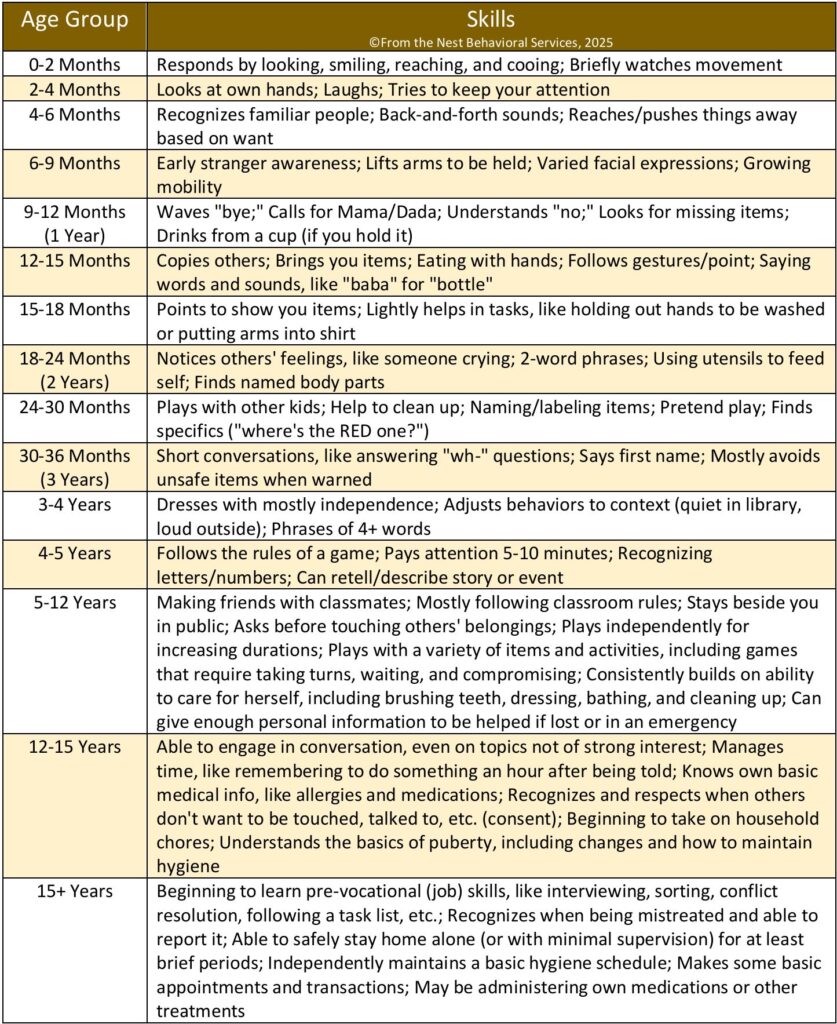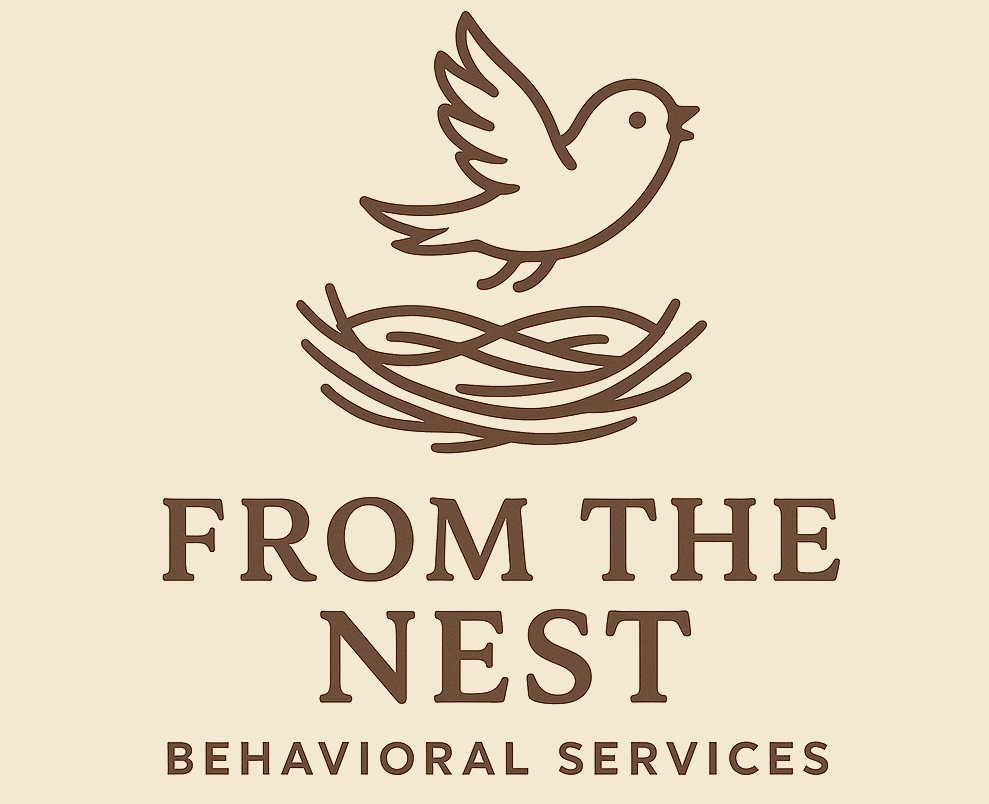
Developmental Milestones:
What Should My Kid Be Doing?
Most parents, at some point or another, find themselves wondering how their children are developing. The neighbor’s son is in the same first grade class as your daughter, and he’s already reading long chapter books. Your sister points out that her children never screamed and cried in the grocery store like your child does. You’re pretty sure the doctor made a face when you said your son still isn’t potty trained.
People will always judge your parenting–that’s an unfortunate fact of life. But child development isn’t completely subjective or a mystery. Like many professionals in pediatrics, other therapies, and diagnostics, BCBAs look at developmental milestones when determining how appropriate ABA therapy may be for a learner, what skills to teach, reasonable and responsible goals to set, and how many hours and/or what model(s) of service are needed.
Typical Development by Age Group
As described by the U.S. Centers for Disease Control and Prevention (CDC, 2025), developmental milestones are based upon what skills can be mastered by 75% of children of a given age. The following chart gives only a small snapshot of the skills anticipated by each age group, but, particularly for children age 5 years and younger, descriptive checklists can be found on the CDC website.

Note that the school-aged, or 5-12 years, group is much broader than the rest; resources like state educational requirements, the Assessment of Basic Language and Learning Skills (ABLLS) and the Assessment of Functional Living Skills (AFLS) can provide a more nuanced view of how children in this group develop.
“Totally ‘Normal!’”
How often have you heard a doctor, friend, relative, or even stranger say that?
Although “normal” is a vague, inappropriate, and unhelpful descriptor for an individual child, there’s some truth to specific behaviors being developmentally normal, even when they can cause a disruption.
In younger children, up to about age 4 or 5, some tantrums–crying, yelling, arguing, crumpling to the floor–are appropriate. Early childhood includes learning contingencies (or that one thing leads to another thing), predictability, boundaries, empathy for others in these situations, and how to better communicate their wants, needs, and alternative ideas (“if I can’t have the candy, can I have an apple?”). Kids at this age may also take toys out of other kids’ hands, occasionally breaks daycare and preschool rules, talk too loud in quiet settings like church or a movie, and wander or dart away from adults if they aren’t holding their hand. Self-management is still developing while impulses rule the day!
In older children, especially preteens and teens, it is typical to see the stereotypical “teenage rebellion,” where adolescents resist firm rules and boundaries, put off tasks they dislike (like hygiene, schoolwork, and chores), argue with parents, respond very emotionally to seemingly non-dire situations (“act out”), express significant mood swings, and avoid family time, even including family activities they once enjoyed. Adolescents are tasked with balancing rapidly increasing independence and pressures to be independent with still relying on others, experiencing the strong feelings of peer relationships and hormones, and having to abide by rules they now challenge the rationale behind.
When It Becomes a Potential Concern
Sometimes, even “typical” disruptive behaviors can become atypical when they occur more frequently, longer, and/or more intensely than most children of the same age. For example, while many toddlers may cry, yell, and attempt to chase after their parents during daycare dropoff for about 10 minutes, for some, these episodes can last hours and include hitting themselves, throwing toys at other kids, or repeatedly attempting to or successfully exiting the building into the parking lot when not receiving one-on-one attention.
In these situations, disruptive behaviors become potentially unsafe behaviors, and ABA therapy becomes an amazing resource. Finding the right provider who uses scientific evidence, ethical care, and family values can increase skills that replace these behaviors, as well as help families to connect with additional resources and teach parents how to safely nudge their “baby birds” toward independence.
by Britt Bolton, owner/lead BCBA
